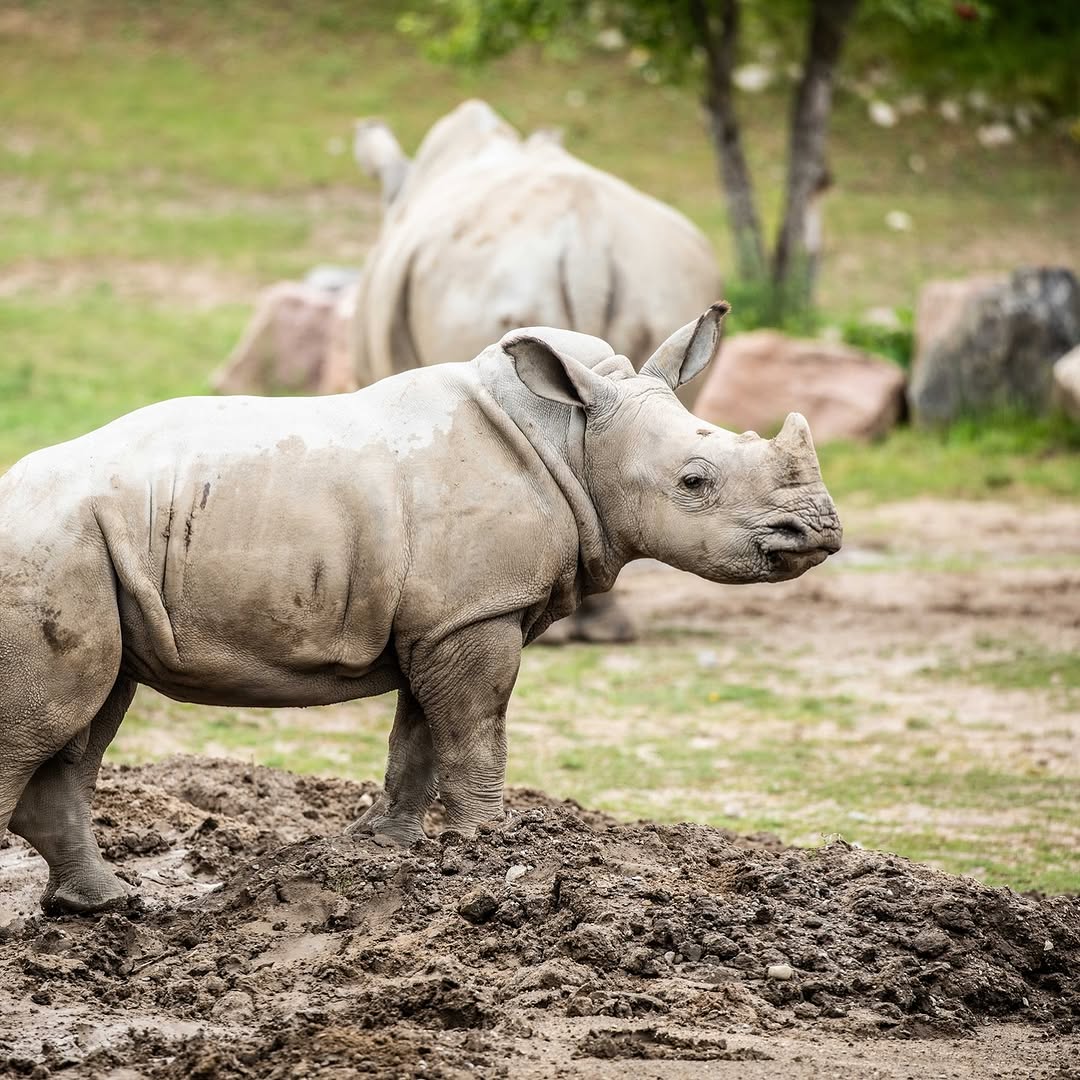- Kifaru’s First Year of Growth and Development
- Transitioning into His Habitat and Socialization
- Scale Training and Weight Monitoring
- Conservation Efforts and Supporting Rhinos
- Partnering with the International Rhino Foundation
The first year of life for any animal, especially one as majestic as a White rhino, is crucial for its growth and adaptation. Kifaru, the newest member of the Toronto Zoo’s African Savanna, has had a busy year since arriving in late December last year. His journey has been remarkable, marked by consistent growth, successful socialization, and active participation in conservation efforts. Understanding the facets of his first year provides insight into the complex care and conservation strategies essential for the survival of this endangered species.
Kifaru’s growth and development have been a primary focus of the Toronto Zoo’s Wildlife Care team. From birth, various factors such as diet, health, and environmental enrichment are meticulously managed to promote healthy development. At the beginning of December, Kifaru’s weight reached an impressive 546 kg (1,201 lbs), a testament to the care and attention given by his caretakers. Monitoring weight is crucial for young rhinos since it offers a clear picture of their health status and growth trajectory. In captivity, rhinos generally grow at a steady pace, requiring a carefully balanced diet that mimics their natural intake in the wild. The team at Toronto Zoo ensures Kifaru’s diet consists of high-fiber hay and specialized pellets, supplemented with fresh greens and vegetables. This diet supports not only physical growth but also enables him to build the strength necessary for social interactions and environmental exploration.
Transitioning into a new habitat is always a delicate process, particularly for animals like Kifaru that require space and social structure. Soon after settling in the zoo, Kifaru was introduced to his 14-year-old aunt, Zohari. Social introductions are critical for rhinos, as they are social animals that thrive on interaction with their kin. Kifaru’s integration with Zohari and another rhino, Sabi, over the summer has been smooth, fostering a nurturing environment that features companionship and learning opportunities. Observing Kifaru explore his outdoor habitat alongside his relatives gives invaluable insights into social dynamics and behaviors in artificial savannas.
A noteworthy aspect of Kifaru’s acclimatization has been his participation in scale training. This training involves conditioning the animal to voluntarily step onto a scale, a process fundamental for accurately tracking an animal’s growth and health over time. Scale training is conducted in a manner that prioritizes positive reinforcement, making it a stress-free experience for the rhino. The success of such programs highlights the strategic interaction between keepers and animals, aiming to improve the well-being of zoo inhabitants.
Donating to wildlife preservation funds is imperative for supporting ongoing conservation efforts. The Toronto Zoo’s collaboration with the International Rhino Foundation underlines the significance of global cooperation in preserving endangered species like the White rhino. These efforts are concentrated on protecting rhino habitats, preventing poaching, and maintaining genetic diversity through improved breeding programs. Financial contributions help fund conservation technologies and outreach initiatives in regions where rhinos are most at risk. With increasing human-induced threats, global partnerships play a pivotal role in ensuring the survival of rhinos.
Partnerships, such as the one between the Toronto Zoo and the International Rhino Foundation, showcase an integrated approach to conservation. These collaborations extend beyond monetary donations, involving knowledge exchange and research initiatives. The scientific community and wildlife enthusiasts are urged to learn more about rhino conservation to aid the collective endeavor of protecting these magnificent creatures for future generations.
Kifaru’s first year is a compelling story of growth, learning, and survival. It is also a reflection of what is possible when human dedication aligns with environmental needs. By observing and supporting the lives of animals like Kifaru, zoos’ roles in conservation and education become evident. Rhinos may appear formidable, but their survival hinges on fragile ecosystems and consistent conservation efforts. Organizations and individuals worldwide must continue to invest in protecting these fascinating creatures, ensuring that Kifaru’s story is one of many success stories in rhino conservation.
*****
Source Description
One Year of Kifaru 🧡➡️
It’s been a busy first year for your latest White rhino addition. Since December 28 of last year and thanks to his Wildlife Care team, Kifaru participated successfully in scale training and was introduced to his 14-year-old aunt, Zohari. If you journeyed through the Africa Savanna this past summer, you may have seen Kifaru enjoying his outdoor habitat with both Sabi and Zohari.
At the beginning of December, Kifaru weighed in at 546kg (or 1201 lbs) and continues to grow 🦏
On this milestone day, you can support rhinos by donating to the @tzwconservancy Wilding Endangered Species Preservation Fund. Through this fund, we are proud to partner with the International Rhino Foundation, furthering your Toronto Zoo’s worldwide conservation impact.
Donate at torontozoo.com/donate


